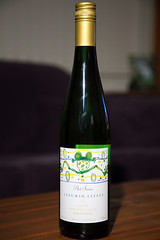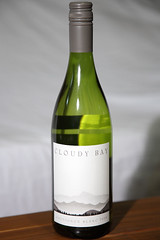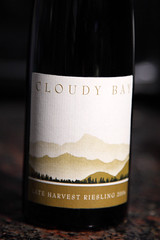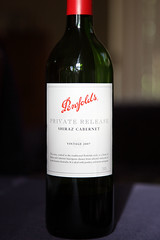 Ah, now this feels like Star Trek as we know it. The fourth episode to air (and the 7th produced), the series has now gotten into stride, and all the familiar elements are now in place. Nurse Christine Chapel makes her first appearance, completing the regular cast (with the exception of the later addition of Chekov), and she gets a dramatic scene with Spock in which she admits her love for him (under the influence of an inhibition-removing space disease).
Ah, now this feels like Star Trek as we know it. The fourth episode to air (and the 7th produced), the series has now gotten into stride, and all the familiar elements are now in place. Nurse Christine Chapel makes her first appearance, completing the regular cast (with the exception of the later addition of Chekov), and she gets a dramatic scene with Spock in which she admits her love for him (under the influence of an inhibition-removing space disease).
The story opens with a bizarre case of crewman Joe ignoring basic safety procedures, by removing a glove of his contamination suit and wiping his nose under his face mask while investigating the mysterious deaths of researchers on the planet Psi 2000. In fact, one wonders what good those contamination suits are when there’s clearly a completely open gap at the neck of the face-covering mask. This lapse of protocol is drawn attention to by Spock a few seconds later when he actually tells Joe not to touch anything – a warning that Joe brushes off by not bothering to mention that he’s already touched something that may be dangerously contagious.
Naturally, the disease gets brought aboard the Enterprise. The spread of the disease produces real drama, making this a very compelling episode and probably the best of the first 4 episodes I’ve reviewed so far. The mystery disease causes, as Spock calls it, “some form of space madness“. This leads to the classic scene involving Sulu wielding a rapier and terrorising fellow crew members. Incidentally, Sulu’s interest in botany is mentioned again early on (I commented on this in my review of 1.1 The Man Trap), leading into a conversation about how botany is old hat and Sulu’s new hobby is fencing. (A reader commented on my post about that episode, mentioning that Sulu originally had Fleeting Passionate Hobbies as a character quirk – he was supposed to change his interests every episode, but this later faded away.) We also see the return of the Space Checkers 3D game in this early conversation in the rec room.
Combined with the space madness is the fact that the Enterprise is observing the natural destruction of a planet, by some process referred to as the planet “condensing”, during which, Spock notes, it reduces in mass, while increasing in gravity. Interestingly, to get out of a spiralling death orbit about this planet, Scotty needs to restart the engines from a cold start in double quick time, and complains that he can’t do it because “I can’t change the laws of physics!” Spock naturally comes to the rescue, inventing a new antimatter/matter mix formula on the spot. This shows off a skill he’ll later use in Star Trek: The Motion Picture to fix the ailing Enterprise‘s warp mix ratios. It also leads to this episode being the first time the Enterprise enters a time warp, which Spock comments on by saying, “Since the formula worked, we can go back in time, to any planet, any era.”
Kirk replies, “We may risk it someday, Mister Spock.”
Finally, we see more complexity to Yeoman Janice Rand. When Kirk is under the effects of the inhibition-reducing disease, he complains to Spock about Rand: “You’re allowed to notice her! The captain’s not permitted!” This implies that he would like to have a romantic relationship with Janice, but is not. Hmmm. We see why he might be attracted to her, because during the medical emergency in which Sulu is swashbuckling around, Rand is assigned to take control of the helm of the ship. No mere administration assistant, this yeoman! All in all, an excellent episode, with plenty of drama and character moments.
Body count: 6 researchers on planet Psi 2000. Typhoid Joe the safety-protocol ignorer.
Tropes: Goggles Do Nothing, Idiot Ball, Recycled In Space, Fleeting Passionate Hobbies, You Fail Physics Forever, Gravity Sucks, Fork Fencing, Fake Irish, Shirtless Scene, All Love Is Unrequited, Tin Man, Scotty Time, Foreshadowing.
(Image © 1966 Paramount Studios, used under Fair Use.)

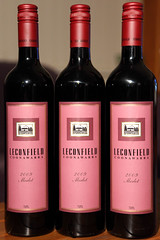
 The third episode, “
The third episode, “ The second episode aired (but the 8th produced) is “
The second episode aired (but the 8th produced) is “ Rummaging through my DVDs last night looking for something to watch in the hour before bedtime, I decided it was time to start rewatching the original run of Star Trek again. And what better way to celebrate than by blogging a few comments on every episode as I watch it? I’m sure there are dozens of people doing the same thing, but why let a little thing like that stop me?
Rummaging through my DVDs last night looking for something to watch in the hour before bedtime, I decided it was time to start rewatching the original run of Star Trek again. And what better way to celebrate than by blogging a few comments on every episode as I watch it? I’m sure there are dozens of people doing the same thing, but why let a little thing like that stop me?